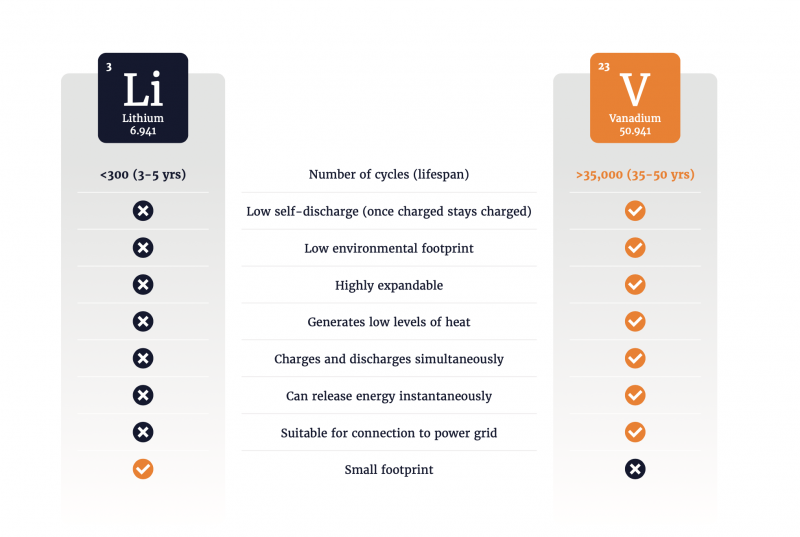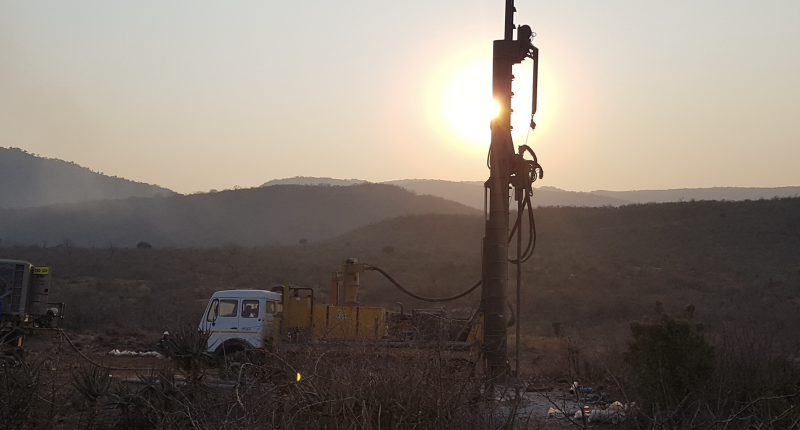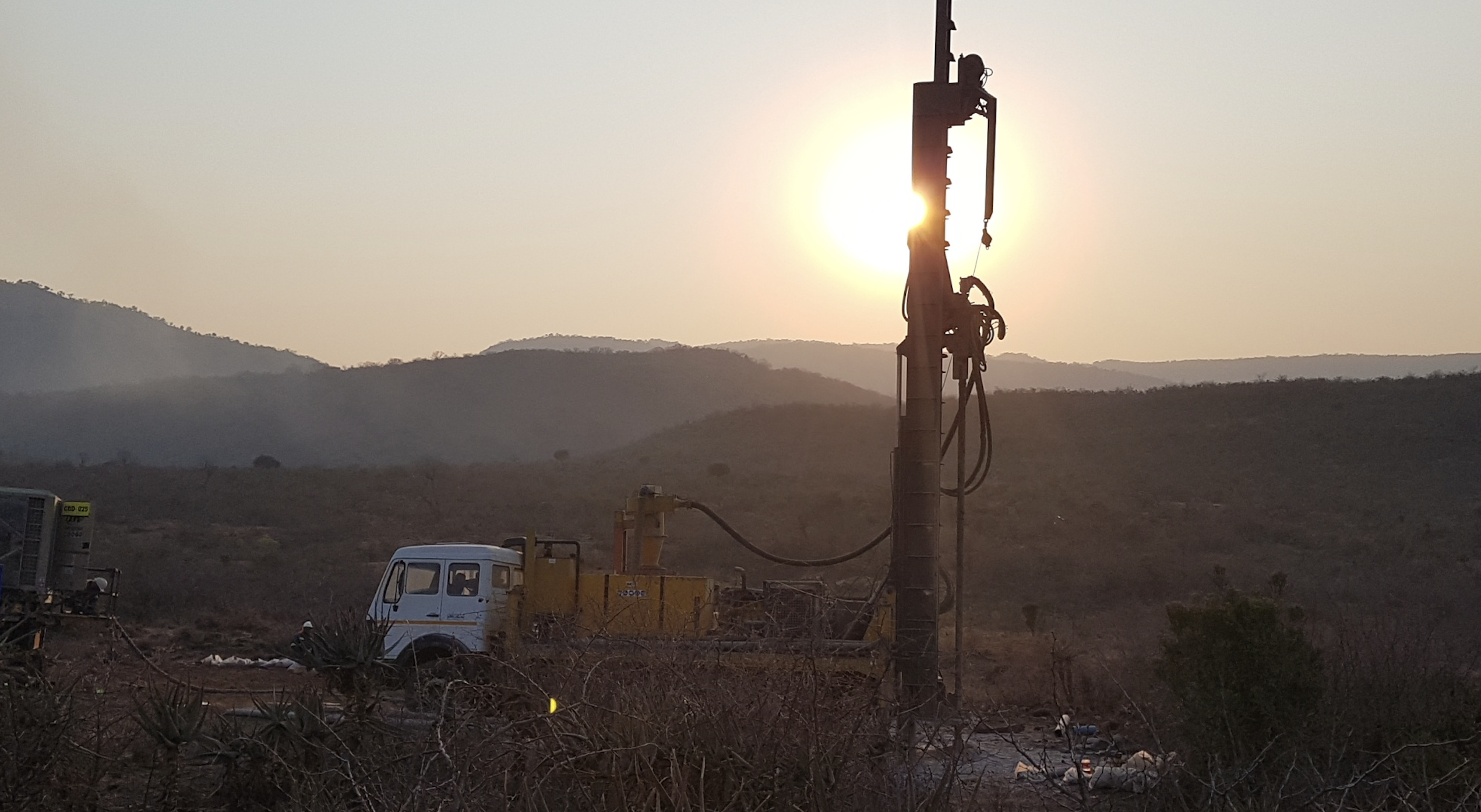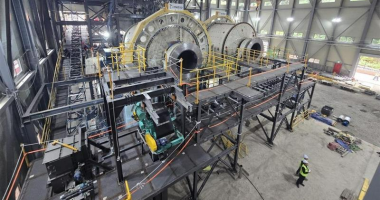- Many renewable energy hubs across the globe are working to further develop large scale energy facilities to store energy generated by the wind, solar or hydropower
- Giant vanadium redox flow batteries could be a missing link for converting plans for wind and solar power into tangible operations
- Vanadium’s non-flammable nature is a major safety consideration, particularly in large scale storage
- A report titled State of Play Australia’s Battery Industries anticipates vanadium demand will grow “4-fold” by 2023
- ASX-listed Vanadium Resources (VR8) believes it has one of the largest untapped vanadium deposits in the world : the Steelpoortdrift Vanadium project in South Africa
Lithium may have been the jump start needed to get us running on renewables, but its counterpart, vanadium, might just pip it to the post as a longer-lasting, higher energy competitor.
From our cars to our homes, the idea of running on batteries in lieu of fossil fuels feels less like a matter of if and more a matter of when.
The likes of South Australia have made firm pledges regarding Australia’s renewable energy transition, but there are certain logistical obstacles holding back a full national rollout.
Harnessing wind, hydroelectric or solar power to run individual homes or businesses is one thing, but integrating these more renewable sources to power towns, states or entire countries requires significantly more intense battery power.
Akin to an Aesop’s fable, lithium had a head start when it came to the battery power marathon, while its more abundant but lesser-known counterpart vanadium had a slower start off the mark.
Albeit more cumbersome in stature, giant vanadium redox flow batteries are putting forward a case as a viable and longer-lasting alternative to lithium batteries in bulk applications if Australia is to push ahead with a full transition to renewable energy.
Without a doubt, lithium will bear invaluable uses during this era, but the comparison prompts an age-old question: When it comes to battery storage, are you better backing the tortoise or the hare?
What is vanadium?
Thought to be named after the Scandinavian goddess of beauty and youth for the etheral colours found in its compounds, vanadium was named by Swedish chemist Nils Gabriel Sefström in 1830.
Vanadium was mistakenly thought to be a lead variant when it was first discovered, however its uses proved far more valuable in industrial manufacturing, the automotive sector in particular.
Vanadium is seldom found in its natural metallic form, but rather as a trace element in more than 60 minerals including bauxites, phospherites — in fossil fuels such as coal and crude oil — and titanium and its accompanying ores.
In terms of use, vanadium is reputed for its ductile properties and ability to greatly enhance the strength of steel through its use as an alloy; just a small amount of Vanadium can significantly alter a piece of steel’s strength, ductility and heat resistance.
When in the form of redox flow battery, however, vanadium could offer its capabilities as a much-needed conduit in harnessing more sustainable power.
Giant Vanadium Redox Flow Batteries
The devil is in the details when it comes to integrating renewable energy sources into our operating world.
Vanadium Resources Chief Executive Officer Eugene Nel believes giant vanadium redox flow batteries could be a missing link for converting plans for wind and solar power into tangible operations.
“A lot of emphasis has so far been placed on developing renewable energy generation on the one end and electric vehicles on the other,” Mr Nel said.
“The missing link in this energy chain has always been in between these technologies as renewable energy generation is very cyclical in nature while end use is a continuous 24/7 event.
“Redox flow batteries provide the perfect solution to this as it provides the opportunity to store the cyclical generated renewable bulk energy and then safely and continuously deliver this to the small usage end user.”

Mr Nel said this was particularly the case with areas with limited infrastructure such as inner Australia and developing areas in Africa.
“Redox flow batteries will prove to be invaluable in microgrid type applications.”
Vanadium may not be the highest-powered battery — this is an arena where lithium batteries usually dominate — but it’s ability to instead store energy safely and with unlimited life is what makes it an interesting tool in Australia’s renewable energy transition.
Many renewable energy hubs, such as those in South Australia and globally are working to further develop large scale energy facilities to store energy generated by wind, solar or hydropower to then be eventually dispatched to one of Australia’s large scale grids or to end-users directly.
Of course, nature can’t be expected to know exactly when Australian offices and homes require energy for peak air conditioning use in summer, therefore these hubs need to quite literally ‘make hay while the sun shines’ to store enough energy for when it’s needed.
Giant Vanadium Redox Flow Batteries prove to be an extremely useful part of this process by storing this energy at its most productive times and dispersing it to the grid when demand calls for it.
“Vanadium batteries has an unlimited lifecycle and can be charged and discharged indefinitely,” Mr Nel said.
“In comparison, Lithium batteries have their highest storage capacity at the start of its lifecycle and then slowly degrades and loses capacity with every charging/discharging cycle until it eventually becomes uneconomical to continue using.
“In everyday life we experience this with mobile phones where the older models start needing almost continuous charging!”
Safety is also a crucial factor in this area, with questions regarding lithium batteries as a potential fire hazard raised in recent years.
The concerns follow incidents from this year such as GM Motor’s recall of LG lithium batteries used in electric vehicles due to fire risk and a blaze at a battery site in Victoria when an A 13-tonne lithium battery caught fire.
Mr Nel said vanadium’s non-flammable nature was a major safety consideration, particularly in large scale storage.
“Vanadium batteries are basically made of vanadium in various oxidation states kept in an acid solution with none of the chemicals or metals used being flammable in nature.
“Lithium however is an extremely volatile metal and combusts when in contact with air or even water which makes extinguishing lithium-based fires nearly impossible and one just have to leave the fire to burn itself out.”
A look into the market
As the 20th most abundant mineral on earth, supply at first glance doesn’t tend to be an issue in the global vanadium market, rather its volatility.
This is due to the fact that not all sources in which vanadium occurs is economically extractable, limiting supply and in turn introducing price volatility.
Vanadium prices can be subject to substantial fluctuations due to its ties to the steel industry; steel being a commodity that ebbs and flows with the economic prosperity of developing countries.
A report titled State of Play Australia’s Battery Industries estimates world vanadium production at roughly 80,000 annual tonnes.
While the same report estimates just five per cent or approximately 4000 annual tonnes represents demand for redox flow batteries, it notes that there has been a “large increase” of its use in China.
Further to this, the report anticipates vanadium demand will grow “4-fold” by 2023, with new capacity mandating 16,000 annual tonnes of the mineral per year.
With this projected demand drawing closer, junior miner Vanadium Resources believes it has secured its foothold as one of the market’s leading aspirants.
A bright spark
Founded in 2017, Vanadium Resources (VR8) believes it has hold of one of the largest untapped vanadium deposits in the world today: the Steelpoortdrift Vanadium project in South Africa.
The ASX-lister has a 74 per cent stake in the Bushveld Geological Complex hosted deposit, which touts a measured, indicated and inferred JORC compliant resource of 662 million tonnes at 0.77 per cent vanadium pentoxide.
VR8 claims the total Bushveld Complex could sustain roughly a quarter of global vanadium supply and that its very own deposit has the potential to further dominate the market if and when the project comes online.
Vanadium Resources makes no claims for being first off the line, but with a Definitive Feasibility Study ticking away and supply agreements settled, Vanadium Resources’ slow and steady could just win the race.








